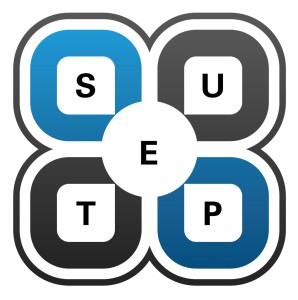What you need in the field for a successful Sales Blitz!
In a Sales Blitz every door is an opportunity and if your salespeople aren’t properly equipped they can miss it.
How to Organize for Success in a Sales Blitz!
Blitzes can be a source of HUGE immediate sales and long term changing of your business normal but only if they are planned and handled right.
If your reps are spending their time driving around lost the company loses. Set them up for success and have a solid plan, and it all starts with the territory they will be calling on.
Sales….. Like Lightning
“How can we achieve a near-term sales increase combined with long-term sustainable revenue growth?”
This is a question that hangs in the air during virtually every conversation between owners, C-Level and Sales Management. One of the tried and true methods to achieve at least half of the equation is to conduct a sales blitz. The trick is how do you morph a temporary sales boost into the “new normal”?
A sales blitz is designed to fulfill the urgent need of increasing sales pipelines immediately. And most sales organizations know the basic “flavors” of blitzes with formats being designed for, at best, impermanent returns. I say both goals of an immediate sales bump and establishing the “new normal” are possible.
It’s a challenge melding lead generation, continual development training and motivational sales meetings, I grant you, but if you run a Blitz using this system be prepared for a revenue growing, “sales climate changing” event.
 S.E.T.U.P. your team for success
S.E.T.U.P. your team for success
Strategy
This step should start minimally 60 days before the blitz. Map out EVERY detail from the initial touch, phone dial, live visit, all follow-up and ongoing relationship builders and more. At the planning meeting ask these questions:
-
What market/area are you attempt to penetrate?
-
What is the goal(s) of the blitz? Short term, Mid Term and Long Term?
-
How can you warm up the market/area you will be blitzing?
-
What will you use to warm them up? What frequency? What platform?
-
What products fit/are most desired by this market?
-
What vendors should you team with?
-
What should your teams have with them? Brochures? Giveaways?
-
What will be the competition’s reaction?
These questions are a great starting point but you have to go deeper yet. We all know long term sales success is about the grind. Doing the little things everyday that build best practice habits that ultimately pay off. It’s the same here only we need to “microwave” the process a bit.
Education
Day 60 should begin with teaching of an effective lead generation system and every system is made up of 3 things, tactics, strategy and learned skills.
Many of the tactics and strategies that need to be adopted are here https://matriximpact.com/site/?p=1125.
Your team also need SPECIFIC skills. Those skills need to be practiced in real-life simulations tightly tied to the reality they will experience. Here are 5 of the skills that will be required of anyone participating in the Blitz.
-
Client research and its application
-
Tele-Sales: Warming up the drop-in
-
Lobby Intro: Getting past the Gate Keeper or at least gaining needed info
-
Benefit Value Discussion: Setting the hook to continue the discussion
-
Facility Walk-through Technique: How do you maximize contact with the right person?
-
Wrapping up the visit: Very few drop-ins will result in a sale. The real goal is increase and expand in your sales pipeline
There should be a regular schedule of training leading up to the Blitz event. Refresher classes, reviews and Blitz day reminders for everybody involved. This is why there needs to be a Blitz QB. One who can coordinate information, learning and distribution for all the Blitz teams.
Tools
There are many tools needed for a successful Blitz. Call Template, all lead generation letters, impact touches, pairing maps, company intelligence, handouts, giveaways schedules and more, all customized for your business and for the goal of your Blitz.
The key is to be prepared and start the assembling of your tools sooner rather than later.
Users & Interface
Everything management does HAS TO BE hands-on. Management needs to be the great guiding hand in the structure of the Blitz but it also needs to be a participant during the Blitz days. I have had everyone from Middle Managers to Vice President’s of Sales to Owners come up to me after a Blitz and effusively say “John, thank you for making sure I was on a Blitz team”.
Think about it. They get out of the office routine of meetings and problems and get to spend minimum 2 days with sales people and customers. They find out what the ground troops do on an everyday basis and what has changed over the years. They hear first hand customer’s issues and concerns. It can reinvigorate the most curmudgeonly of management and this isn’t even the best reason.
When a prospect/customer is introduced to the Vice President or Owner the look on their face is priceless. I mean WOW, the VP or Owner took time out of her/his day to come and visit. Few gestures have a greater customer service impact than this.
Sales people MUST take ownership as well. They have to be involved in all strategy discussions. There a a multitude of tasks that need to be divvied up among the sales team. A sales person has to be the in-office Blitz QB. This is a critical position. Their job is to coordinate all activity. They have to stay in touch with the teams and provide updates. They are also troubleshooters as opportunities or problems come up. Depending on the size of the blitz you can have as many 2 or 3 QB’s to ensure you have proper support.
The bottom-line: from ownership to front-line sales, everybody plays a crucial role in the execution of a successful Blitz .
Performance
This is what it is all about! You need to GUARANTEE your team is prepared, practiced and energized. If you do you will be SETUP! to have a successful Blitz day(s) and to continue your success throughout the year.
After your strategy meeting(s) you need to conduct
-
Weekly update meetings: No longer than 30 minutes but it is CRITICAL to make sure everyone is completing their assigned duties, remember there is no small job when executing a Blitz.
-
Minimum of 3 education sessions: Would you rather your salespeople practice on their customers or with you?
-
Blitz Kickoff: Night before the Blitz you cover every detail and logistic necessary and take all questions. Team & territory assignments, Car stock, Vendor presentation and motivation. Make sure you have daily goals and prizes for performance as well.
-
Blitz Day: Everybody rallies at central location, unless territory demands call in. You go over any final pieces and send them off to kick BUTT.
-
Blitz Day Re-Cap: Everybody reconvenes at central location. You cover the results, hand out daily prizes, share successes, what worked and what didn’t then break for dinner.
-
Blitz Wrap Up: Similar to Re-Cap. You also need to triage all leads and assign to proper parties. Agree on timing of followup meetings to check progress of leads, generally think 2 weeks out, a month out and 90 days out. This will allow you to see “the toothpaste getting squeezed through the tube”.
Below are the Performance results from a tightly run, well executed Blitz.
You need to lay the ground work for continued nurture prospecting that leads to a steady stream of sales revenue for the foreseeable future. This process focuses on installing habits in your sales team and helping to either create or augment a lead generation system. When executed correctly, a Blitz will bring in immediate sales dollars and set the tone for ongoing success within your current selling environment.
A Blitz is not a band-aid type solution to improving sluggish sales. It’s an organic, holistic method to improving today’s sales revenue AND your overall sales atmosphere, establishing a “new normal” to your team’s everyday sales activities and results.
5 Step Process for Increased Lead Generation with Case Study
Today I am going to layout the 5 Pillars of the S.I.T. Lead Generation process. Lead generation success comes down to follow-up and measurement. Understanding what constitutes success in lead generation is where there is misunderstanding. Frequently, people choose only 1 metric to determine success. That is no different than saying that the only thing that matters on a balance sheet is receivables or the only thing that matters in a formula is one ingredient.
The First Thing to Know
Understanding the numbers means you must understand the system behind them. The who, what, why, where, when and how of the S.I.T lead generation system not just one sole metric.
Remember, just because people are being “touched” by your lead generation machine does not mean they are going to buy. If you don’t understand the buying cycle and buying proclivities of your marketplace YOU WILL NEVER SELL ANYTHING.
If you see an ad for a cool car do you run out and buy one? If you see an ad for a great looking watch do run out and buy one? The answer in 3 parts is A) Yes if you have large disposable income B) No if you are not in the market (have a real/perceived need) or C) No if you do not have the budget.
There is absolutely NO WAY to determine without talking to someone what factors are the cases and every situation is different. What an effective lead generation program does is put your solution in as many “selling cycles” as possible without initially knowing which ones will bear immediate fruit. What you can know is what marketplaces, titles, applications etc. give you the best opportunity.
The S.I.T. lead generation program is a cumulative effect relationship where success grows with more and more “correct” contact. Make no mistake there is also lightning effect sales that happen immediately. The only caveat to remember is that if people do not have a (real/perceived) need or do not have disposable income you can be the greatest sales person since Tom Hopkins or “Don Draper” but you won’t be selling anything.
Step 1. Refine the definition of “sales-ready”
Many organizations struggle with the exact definition of “lead.” And the biggest difference of opinion usually lies between Sales and Marketing. The questions marketers should be asking are:
-
What do salespeople really want?
-
What do they need in order to sell?
Salespeople need to manage their precious time. Quota-carrying reps are acutely aware of the relationship between their time and value to the company. A rep has to continuously ask oneself, “What is the probability of this deal closing? And what is its inherent value?”
Step 2. Qualify leads based on a Universal Lead Definition (ULD)
Regardless of the model you choose, it is vital that the choice is made jointly by Sales and Marketing. Effective demand generation teams will establish a process that defines a lead, establishes a follow-up process and determines how quickly a lead must be moved further down the funnel unique to your industry.
Once a common lead definition has been found, it is the marketing team’s responsibility to filter leads accordingly. Marketing automation platforms and lead scoring processes all help to determine qualified leads for sales readiness. But sales reps will play a vital role in this process, as well. There is only so much that automated systems can accomplish without a human touch.
Step 3. Nurture early stage leads until “sales-ready”
Lead nurturing is “the process of having a relevant, consistent dialog with viable potential customers, regardless of their timing to buy.” With lead nurturing, you are strengthening the relationship you have with potential customers, by adding value, even if they never buy from you.
This is the process of becoming a “thought leader” and changing the relationship you have to the industry from vendor to resource. This one, very crucial differentiation is what determines volume of future success.
In order to nurture leads effectively, you must employ the Big 3:
-
Relevant Content: That which that speaks to their needs at any given time. In B2B, you nurture organizations, not people. By providing an individual with meaningful information, you are helping that person have meaningful dialogue with others in that organization.
-
Timing: Every organization has it cycles. There are exactly 2 ways to determine a
 company’s buying cycle 1) Calling and talking to everyone involved 2) Touching them periodically until the pattern emerges.
company’s buying cycle 1) Calling and talking to everyone involved 2) Touching them periodically until the pattern emerges. -
Consistency: Nature abhors a vacuum. Once you start a lead generation program you end it at peril to your organization. People begin to “expect” information from you at regular intervals. Once that information stream ceases they will find another and it will be a competitor, count on it.
Most people have always thought of lead nurturing as just an automated letter/email workflow. It is really about reaching people in whatever channels they want to be reached with information that is valuable to them. News articles, seminars/webinars, regulatory notices all are potential “touches” and while choosing multiple channels is important, The Big 3 are the Key. Marketing is a mindset, not an activity.
Step 4. Define hand-off process from Marketing to Sales
The hand-off between Marketing and Sales is crucial, and yet remains a common misstep in the process of moving leads through the funnel. In order to make the lead transition as smooth as possible, have a documented process, a process agreed upon by both Sales and Marketing. The following process should be clearly defined and followed to ensure the hand-off is effective:
Be sure the lead is “sales-ready”
-
Leads must clearly fit the ULD
-
Leads must express a desire to speak with a sales rep
-
Leads must be qualified, with supporting information
Be sure to have a clear handoff process
-
“Don’t drop the baton” — ensure that lead ownership is clear and agreed upon
Establish a quick, efficient timetable for turnaround
-
Tracking and accountability is key to short and long term success
Ultimately, the S.I.T. program not only increases efficiency, but also shows if your leads are actually helping your sales team convert, as well as measuring the contribution to the pipeline.
Step 5. Close the loop
Effective sales and marketing organizations are ones that communicate well. Regular meetings should be held to gauge progress and success. In these “huddles,” both teams can collaborate to review results, fix procedural errors and refine priorities moving forward.
These meetings will provide your team with honest, actionable feedback from Sales, helping you determine:
-
If your lead information is accurate and helpful
-
If your leads are in the target market
-
If your leads are “sales-ready” (i.e., ready for sales rep involvement)
There is detail to be filled in under each step but that detail is always going to be subject to your industry, market, product etc.
Below is an example of the success you can see with the S.I.T. process.
Case Study: Prime Coat Coatings
“We have grown the database by over 1000 contacts that we never knew existed until we started this program. We have cleaned up the existing CRM by validating contact information and accurate locations. More organizations now know of Prime Coat than ever before and as we go forward with our Prime Coat 2.0 initiative we will see the fruit from those seeds. For example Prime Coat Indiana is on pace to have a solid year, somewhere in the neighborhood of 1.5 million or so. To date 92% of ALL their 2010 business can be traced to lead generation touches dating as far back as 2006.
Based on information from the CRM and quote system we have quoted approximately $350,000 of business from the touch system. The touch system is defined as anybody who has received letters from us and as a result went to a trade show or called/emailed in directly to the company. We have closed close to $55,000 from the quotes. This is from jobs that are the direct result of either letters or touches that led to meetings at tradeshows.
We also have some success at Abbott that are not mentioned in the above numbers. We are seeing Dave Harvey close more in coatings business in the last few months than he has in a long time. He has been averaging approximately 50k a month in coatings business the last 2 months. This is following our lead generation efforts there. They received letters along with Dave Harvey staying in constant contact with them and as a result he should have 4 straight months of over 100k in billings.
What these numbers do not contain is all the potential business out there that we are now lining up, things that we never were going to hear or know about UNLESS we were executing this system. We are injecting ourselves into 100’s buying cycles a week and getting more and more call in’s and emails to the web site. This will lead to a continued, sustained and organic growth. And as we tighten down the rest of our systems the results will only get better.”
How to Improve Your Conversion Rate 50% When Calling Prospects Part 3 of 3
The purpose of the previous posts were to warm up the “environment.” You want the potential to become “aware” of who and what you are so when they are reached, you have positioned yourself correctly in their mind. If this is accomplished, best case is they reach out to you, worse case is they are at least receptive to your call.
Today’s post we are going to focus on what the potential needs to hear to schedule the appointment. All the research and prospect warming up in the world doesn’t mean diddly if we cannot communicate our message with the potential customer.
Rule 1
The ultimate goal of a call, in this situation, is to set a Discovery Appointment. The goal IS NOT selling your product/service. This might seem pretty simple but it’s a common blunder salespeople make very frequently.
Often times, salespeople think that if we manage to get the potential on the phone that we need to perform a total data dump on them. This is a critical error. You have invested a chunk of time researching and warming up the contact so as to differentiate yourself from the competition, then you go and lay an egg the first chance you get.
K.I.S.S. Keep It Simple Salesperson
If you can’t provoke their curiosity then this attempt to land an appointment is OVER. The potential needs to hear what is relevant and what makes an impact on their business to make a decision on seeing you, that’s it. Here are some topic area examples:
-
Incorporating your relevant pre-call research.
-
How your product/service solves problems or issues your prospect faces.
-
Actual results you’ve achieved with other customers.
-
What might pique your customer’s interest based on your knowledge of their business and the market.
Opening Line
There are 4 points to hit in your opening line.
-
Identify yourself
-
Remind them of your warm-up touches and/or any other relevant information learned from research
-
Hit them with an Impact Line, something that demonstrates how you can help them in about 7 words
-
Engagement question: You have to get the buyer to engage early in the phone call

Below is a diagrammed example of a very successful Opening Line my clients have used to great success.
-
Hi Mr. Jones this is John Kolencik with XYZ (Identify yourself)
-
you might have seen the (Information piece: article/chart etc.) that I sent to you. (Relevance to the Potential)
-
We help/improve/increase our clients’ ______ (in these areas) (Impact to the Potential)
-
I was wondering what (are) (the) ______ (areas) (do you) (have you ever) currently are (trying to improve)? (Engagement Question)
I tend to use the warm up touches reference but you can substitute that line for something about the company itself, industry or market.
If you have done your job by quickly demonstrating you are knowledgeable/helpful and can potentially bring significant value to the table, you should get a response to the Engagement Question.
Keep in mind that the Engagement Question often leads to a few more questions from the potential before you get to the endgame.
Final Objective
This has all been about getting the appointment, so now we have to segue into asking for it.
Here is a sample:
“Well, Jerry, let me share with you my process, in terms of how we work. I’d like to suggest getting together for about 30 minutes. What I’d like to do is come in, learn a little more about your situation and also share some ideas I think you’ll find valuable. I’m not going to try and sell you anything. If we think there’s a fit at that point, we can put our heads together and figure out where to take it from there.”
You are now ready to ask for the appointment
“Jerry, do you have your appointment calendar handy?”
Never try to force the appointment in the current week unless the prospect volunteers it. Always shoot for a week out from the date of the phone call.
Handling Objections
You may have to face one of the following three objections. 
-
“Could you send me some literature instead?”
-
“I’m really busy. Could you call me back next week?”
-
“We’re already working with someone in that area.”
Let’s discuss some ways to handle each of these common objections.
“Send Me Literature.”
Your best response is as follows.
“Sure, I’d be happy to send you literature, but at XYZ, we are really in the tailored solution business. I’ve got 20 different customers on 20 different programs, so I’d have no idea what to send you based on the uniqueness of your situation.
Let me make a suggestion. Instead of me sending you literature, why don’t we get together for 30 minutes, I think you’ll find it very rewarding, and I’m not going to sell you anything. I just want to see if there is a way to add value to your company. Would the week of the 24th work for you?”
“I’m really busy can you call me back next month?”
Don’t back away. Go ahead and respond like this.
“Sure, no problem. I run a really busy schedule also.
Let me make a suggestion. Instead of me calling you back next month when I’ll probably have to re-remind you of who I am and what we do, why don’t we set up an appointment for x# of weeks out, and I’ll tell you what, I’ll call to confirm the appointment a week prior to it to make sure it’s still good. Would the week of the 18th work for you? Perhaps on Wednesday at 10 am or so? Could you check your calendar to see if it’s convenient?”
“We’re Already Working with Someone In That Area.”
Employ this response.
“No problem. We certainly appreciate it when our customers show us loyalty, but as it happens, most of our current customers were already working with someone prior to aligning with us.
Jerry, we’re a bit different in that we don’t often compete as much as cooperate with current vendors as a means to help a company become best practice. The whole focus is around adding value to your company, often in a complementary manner to current vendor.
Jerry, let me make a suggestion. Why don’t we set an appointment for 30 minutes one day? Maybe there’s a fit, maybe not.
Regardless, I think you’ll find it a really interesting exchange. If x date is bad, how about during the week of ______?”
Final Thoughts
In this post I give you specific examples of words and phrases. Use this post for the structure of your calls. Modify the words as needed for your product/service, market or industry so your own personal voice will come through.
Marketing Sherpa conducted a study that said 75% of everybody you touch with your lead generation efforts will buy something either from you or your competition. But if you take a day, week or month off who knows what opportunities you may miss.
Lead generation is a customer engagement process. It is both cumulative and immediate in varying degrees based on strategy and tactics. It can be big bang or slow boil but the key is not to treat it as binary. Lead gen needs to be part of your daily, weekly and monthly DNA.
I promise, if you practice the tactics in these blog posts and make lead gen a part of your everyday routine you will see colossal gains in your sales revenue.
…..and remember you can either make sales or make excuses but you can’t do both!
How To Improve Your Conversion Rate 50% When Calling Prospects Part 1 of 3
I do not believe in classically defined cold calls; Picking up the phone and calling a list of contacts that we know nothing about. We live in a digital age and those types of calls are analog. I do believe, as professional sales/business people, that we absolutely NEED to make as many calls to potential clients as possible. The question is how we do it.
There is soooo much we can do to warm up these calls and to make them more impactful than our predecessors could possibly imagine. The first part of this strategy starts with our willingness to put in the time to do research BEFORE picking up the phone. I am not talking about writing a thesis on each potential but there is work to be done BEFORE we pick up the phone.
The Library and Linked In
Almost every suburb now has state of the art library facilities that you don’t even have to go the building to use and it only costs you a trip to the library to get a library card to allow you access. They have online research tools like Reference USA, Regional Business News or Glassdoor, any one of these will give you more information than you can possibly imagine.
Then there is Linked In. This is the greatest free research tool ever invented. You can find out, in great detail, the professional specifics of virtually anybody or any company. The search tool is also top notch. What I like most is being able to search by school as well as other categories. I mean why not start with people you either went to school with or attended your school?
End of Part 1
The bottom line is with a minimal time investment you can learn gigabytes of information about potential clients before ever talking to them. All it takes is the want to on your part, the desire to differentiate yourself and services to the potential BEFORE they even know who you are.
Each piece of this process builds the needed momentum to get an increase of 50% in your conversion rate. My next post will teach you the most impactful way to get a potential client’s attention before you call.
In the meantime, you can either make sales or make excuses but you can’t do both!
Selling to the Government and Municipalities
I recently had a great conversation with an old friend about this topic, specifically about making a presentation to a group of decision makers and influencers. Below is the summary of my advice to him.
Rule 1: Don’t waste precious time talking about how great your company is, how many locations or how much yearly revenue it achieves. Customers want to know SPECIFICALLY how you can solve their problems and how you can save them money.
-
Governments/schools are two verticals highly resistant to change but they do

understand budgets and DOLLARS. -
Tie problems/issues together with their price tags EARLY and often in your presentation.
-
People can’t cognitively get their head around the big numbers quickly. DO NOT try a big, dramatic reveal just before presenting the investment (not price). If you try and pull a “ROI rabbit” out of your hat at the end of a presentation they will initially think it is a “sales trick.” Build the ROI case slowly from the beginning, so they are doing the math as they go.
-
Now, when presenting the investment (not price) customers already have the simple math down and are thinking “this solution amortizes itself over x years or months.”
Final Point: The first thing government, schools and the like think when seeing they can save money on a potential solution is what they can buy with the savings. Remember the nature of budgets in governments, municipalities and schools is if you don’t use it, you lose it.
-
What else is in their plans?
-
What projects could they fund with the savings from your project?
-
How would it make the decision maker(s) look like heroes?
 If you can answer these questions, if you can make the DMs heroes or make a dream project come true you are not a sales person but a savior and the sale closes itself!
If you can answer these questions, if you can make the DMs heroes or make a dream project come true you are not a sales person but a savior and the sale closes itself!
Remember the words of Seth Godin “People rarely buy what they need, they buy what they want.”
5 ½ Reasons Why You Should Include Simulations in Your Hiring and Training Processes
People are your most precious resource. Nobody WANTS to make a mistake in hiring or promotions. When it comes to training Andy Grove, the Intel visionary, said it best, “The most important charge a good manager owns is the responsibility to continuously train his/her employees.”
Below are the 5 ½ reasons why simulations should be an integral part of your hiring, promotion and training processes.
-
The 5 to 1 Ratio
A mis-hire/promote costs the company 5 times the candidate’s annual compensation ($50,000 salary costs the company $250,000).
With training its just as easy to see the ROI. A business parable for you:
CEO said to the CFO ‘We have to train our people to get better.’
CFO says ‘Yea but what if we invest time and money to train them and they leave us to go to our competitor?’
CEO shoots back ‘What if we don’t train them and they stay?’
Whether it is a mis-hire or a less than adequately trained employee the impact on client relations, revenue, productivity, supervision time and morale is negative and it is huge.
-
The Power of Proof
Have you ever had an interview where the person told you they couldn’t do the job? Or have you ever had a person who “stretched” their abilities in the interview and as a result you were cleaning their messes for days, weeks or months after?
A best practice simulation provides you “Point-to-Point Correspondence” with the job. When the activities found in the simulation are a replica of activities that are required on the job, you get an accurate portrayal of skill level.
This is also why simulations are critical to training. Do you really want salespeople “practicing” on customers? Of course you don’t! General George Patton once said “The more my troops sweat in peacetime the less they bleed during combat.” Simulations are a must in all continual development.
-
How do They Handle the Debrief
Once they perform in the simulation how do they respond to constructive criticism? Are they thin-skinned? Do they gloat? Is their self-confidence warranted? Many times, you find out the best and the worst of people by observing how they handle coaching.
It also opens a window to know how they learn best. Through the Debrief you will discover what they will and won’t respond to. This can be invaluable as you continue to train and develop your team.
-
Go to the Video
When recorded, simulations help reduce, if not remove bias and subjectivity in the hiring process in one BIG way, “The eye in the sky does not lie.” You don’t want a he said/she said situation in any business scenario, but especially in simulations.
Here’s a great example of the benefit of recording simulations: A hiring manager who got a ‘good hit’ off a candidate, in an interview, might get a completely different feeling after watching a recorded simulation. The candidate might be the most charming person in the world, but when the time came he didn’t have the skills he trumpeted. In any business, that is a disaster averted.
Recorded simulations are irreplaceable in training as well. There is nothing better than being able to go back and review specific areas for either praise or correction. Plus, reviewing with individuals their recorded progress or regression is a very powerful training tool.
-
Onboarding
Even if somebody is an A-Player it does not mean they are perfect. Too many onboarding programs fail to adapt to the candidate, thus slowing the speed to effectiveness of the new hire.
Simulations don’t just weed out bad candidates. They also help you to assess a good candidate’s specific strengths and weaknesses in a hyper-accurate way. This allows you to design/implement an onboarding process to speed them to productivity. Not to mention it helps in offer decisions like salary negotiations.
5 ½. Positioning Your Company as the Best
The War for Talent is upon us and there are only so many A-Players out there. The mistake most organizations commit is purposefully making the hiring process easier out of fear of losing the candidate.
Thomas Payne said, “What we obtain too cheap, we esteem too lightly: it is dearness only that gives everything its value.” Being with the BEST requires paying the PRICE. Candidates learn respect for the position and respect for the company by demonstrating how seriously the company takes the hiring process. The best  candidates don’t want to be with some company that just rolls over. Remember everybody wants to belong to The Club that is impossible to get in.
candidates don’t want to be with some company that just rolls over. Remember everybody wants to belong to The Club that is impossible to get in.
87% of people who voluntarily (i.e .Quit) leave a company do so because of a lack of growth and development opportunity. Its human nature to want to improve, to develop new skills, succeed and advance. If you have good people, make them better.
Use simulations to continually train and develop your team. And you know what they call the company with the top employees… they call that company the BEST!
To ensure you are hiring A-Players and for training to be impactful and ‘sticky’ both have to be closely tied to how things are actually done in your organization. This is why simulations are such a critical management tool.
The Right Way to Hold People Accountable
Hi Folks. In my previous blog post, I was talking about holding yourself accountable as a leader. Well ‘lo and behold this article pops up in my email box this morning.
It is a great piece on the topic of accountability and the 5 areas where you must BE CLEAR for real accountability to truly exist. I will be continue digging into this topic as it relates to sales leadership and management as January progresses.
Here is an excerpt from the article and the link to the entire article is below.
- Clear expectations. The first step is to be crystal clear about what you expect. This means being clear about the outcome you’re looking for, how you’ll measure success, and how people should go about achieving the objective. It doesn’t all have to come from you. In fact, the more skilled your people are, the more ideas and strategies should be coming from them. Have a genuinely two-way conversation, and before it’s over, ask the other person to summarize the important pieces — the outcome they’re going for, how they are going to achieve it, and how they’ll know whether they’re successful — to make sure you’re ending up on the same page. Writing out a summary is a good idea but doesn’t replace saying it out loud.
- Clear capability. What skills does the person need to meet the expectations? What resources will they need? If the person does not have what’s necessary, can they acquire what’s missing? If so, what’s the plan? If not, you’ll need to delegate to someone else. Otherwise you’re setting them up for failure.

- Clear measurement. Nothing frustrates leaders more than being surprised by failure. Sometimes this surprise is because the person who should be delivering is afraid to ask for help. Sometimes it comes from premature optimism on both sides. Either way, it’s completely avoidable. During the expectations conversation, you should agree on weekly milestones with clear, measurable, objective targets. If any of these targets slip, jump on it immediately. Brainstorm a solution, identify a fix, redesign the schedule, or respond in some other way that gets the person back on track.
- Clear feedback. Honest, open, ongoing feedback is critical. People should know where they stand. If you have clear expectations, capability, and measurement, the feedback can be fact-based and easy to deliver. Is the person delivering on her commitments? Is she working well with the other stakeholders? If she needs to increase her capability, is she on track? The feedback can also go both ways — is there something you can be doing to be more helpful? Give feedback weekly, and remember it’s more important to be helpful than nice.
- Clear consequences. If you’ve been clear in all of the above ways, you can be reasonably sure that you did what’s necessary to support their performance. At this point, you have three choices: repeat, reward, or release. Repeat the steps above if you feel that there is still a lack of clarity in the system. If the person succeeded, you should reward them appropriately (acknowledgement, promotion, etc.). If they have not proven accountable and you are reasonably certain that you followed the steps above, then they are not a good fit for the role, and you should release them from it (change roles, fire them, etc.).
Link to the rest of the article is right here
The Right Way to Hold People Accountable
Are You Holding Yourself Accountable as a Leader?
I spend my days helping organizations grow their sales an average of 42%. The longer I am in this field the more I realize NOTHING is more important than having the right people in place, especially in leadership. One of my favorite quotes on the subject comes from Alexander the Great: “I am not afraid of an army of lions led by a sheep; I am afraid of an army of sheep led by a lion.”
We can set processes in place and develop naive sales people into savvy business people but if the people at the top don’t get it we may as well go to the window and throw our money out of it.
This is a BIG area of concern for every sales leader out there in the coming year. I promise to do everything I can to help you keep your eyes on the prize and doing the things needed to be a success but in the end it comes down to you. Or as I like to say “you can either make sales or you can make excuses but you can’t do both.”
Couple questions to ask yourself:
- “What are you accountable for as a leader and are YOU meeting those expectations?”
- “How do you hold yourself accountable?” Do you have an“accountability partner” or do you just “wing it”?
- “Do you have clearly defined and communicated expectations?”
- “How do you keep FOCUSED?”
Below is the text from a one page reminder Click Here for the PDF version of this http://www.slideshare.net/JohnKolencik/are-holding-yourself-accountable-as-a-leader
“As leaders, we enjoy the responsibility of helping our people develop in a way that encourages them to hold themselves accountable for their attitudes, their work, and their results.
We need to be as disciplined, resourceful, and resilient in our efforts as we ask our people to be in theirs.
Relentless leadership is embracing the fact that the need for reinforcement never ends and uncomfortable conversations are a necessity. This is how something special is created.”
Click Here for the PDF version of this http://www.slideshare.net/JohnKolencik/are-holding-yourself-accountable-as-a-leader
Archives
- May 2018
- November 2016
- June 2016
- April 2016
- March 2016
- February 2016
- January 2016
- February 2012
- January 2012
- December 2011
- October 2011
- August 2011
- July 2011
- June 2011
- May 2011
- April 2011
- March 2011
- February 2011
- July 2009
- June 2009
- May 2009
- August 2008
- June 2008
- May 2008
- April 2008
Categories
- A-Players
- Best Practice
- Change
- Cold Call
- Communication Skills
- Continual Development
- Critique Session
- Customer
- D.I.G.
- Drive
- Firing
- Guts
- Handling criticism
- Hiring and Assessment
- Hiring Dashboard
- Human Resources
- Intelligence
- interview questions
- Interviewing
- interviewing sales superstars
- Lead Generation
- Leads
- Motivation
- Naturally Curious
- New Contact Touches
- Position Contracts
- Proposals That Sell
- Prospects
- Reference Checks
- S.I.T. Blitz
- S.I.T. Nurture Prospecting System
- S.I.T. Touch
- Sales 3.0
- Sales Blitz
- Sales Management
- Sales Superstars
- Simulations
- Skill Sets
- Staffing
- Suspect/Prospect/ Customer Dynamic
- Suspects
- Talent and Traits
- Termination
- Uncategorized









